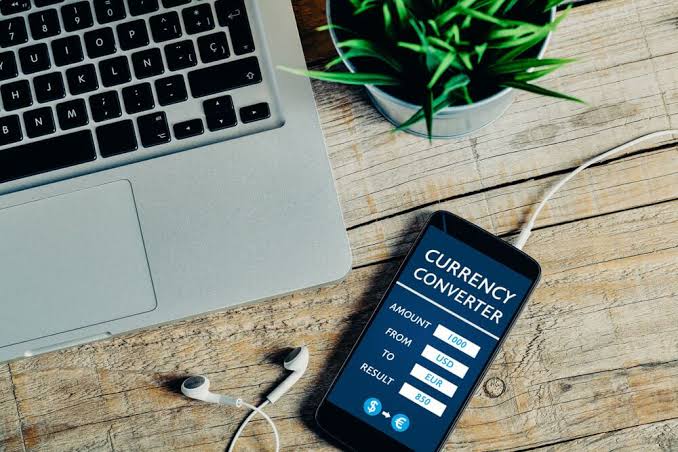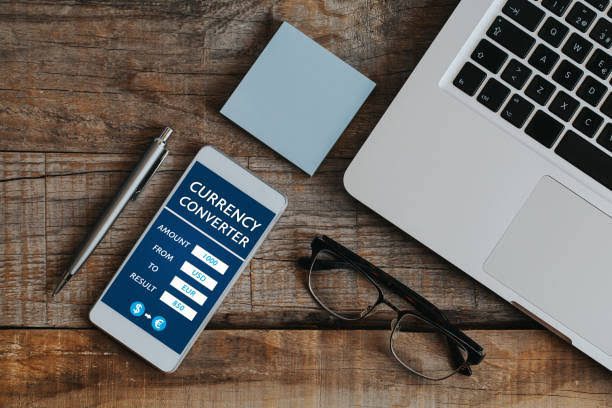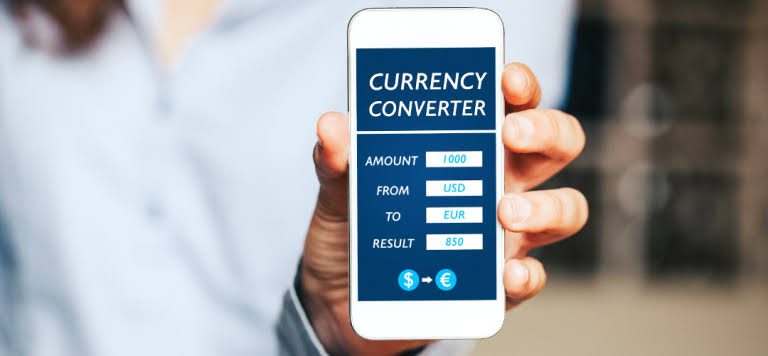A currency converter is a tool used to exchange one currency for another, based on the current exchange rate. It enables individuals and businesses to determine the equivalent value of money in different currencies.
The purpose of such converters is to simplify the process of understanding the value of one currency in relation to another, especially when conducting international transactions, travel, or investment.
Currency converters are often used by travelers, international businesses, online shoppers, and anyone who engages in cross-border financial transactions. The advent of online currency converters has made these tools more accessible, providing instant conversion data for a wide range of currencies.
The concept of currency conversion dates back to when global trade began, and different regions started using distinct forms of money. Each currency has a specific value, which fluctuates due to various factors such as inflation, economic stability, interest rates, and supply and demand.
Currency converters rely on the exchange rate to determine how much one currency is worth in terms of another. For example, if someone from the United States wants to know how much their US dollar is worth in euros, a currency converter will calculate the equivalent value using the prevailing exchange rate between USD and EUR.
The core function of a currency converter is to perform calculations based on the exchange rate, which is the price of one currency in terms of another. These rates fluctuate constantly because they are influenced by the dynamics of the foreign exchange (forex) market, which operates 24 hours a day.
The rates can change due to a variety of factors, such as economic news, political events, and market speculation. The fluctuation in exchange rates makes currency converters essential tools for businesses and individuals who need to keep track of these changes to make informed decisions.
Currency converters typically work by inputting the amount of one currency that needs to be converted into another. The user selects both the source currency and the target currency, and the tool then applies the current exchange rate to perform the calculation.
For instance, if an individual is traveling from Japan to the United States and wants to know how much 10,000 yen is in dollars, they simply input the amount in yen and the tool will provide the equivalent value in US dollars.
The exchange rate used for the calculation is usually updated in real-time based on market conditions. There are different ways in which currency converters can be accessed. Many financial institutions, such as banks and exchange bureaus, offer online currency converters on their websites.
Additionally, mobile apps and websites dedicated solely to currency conversion provide tools that enable users to convert currencies quickly and easily. These converters are often integrated with other financial tools, such as real-time stock market data, to provide a comprehensive view of the user’s financial needs.
Some converters even offer the option to save previous conversions, which is useful for frequent travelers or businesses that deal with multiple currencies regularly. The accuracy of a currency converter largely depends on the exchange rate source it uses.
Some converters pull their rates directly from the forex market, while others may rely on exchange rate data from banks, financial institutions, or central banks.
The rates provided by these converters are usually close to the real-time market rates, but they may differ slightly due to variations in fees or commissions charged by the institutions involved in the exchange.
It is important for users to understand that currency converters provide approximate values and that actual rates may vary depending on where and how the conversion takes place.
The process of currency conversion itself involves several steps. First, the exchange rate is determined, which is the price of one currency in terms of another. This rate is influenced by several factors, including supply and demand, economic indicators, and geopolitical events.
The exchange rate fluctuates constantly based on these factors, so it is essential for individuals and businesses to check the most up-to-date rates when making a conversion.
Once the exchange rate is determined, the next step in the process is to calculate the equivalent value in the target currency. This is done by multiplying the amount of the source currency by the exchange rate.
For example, if the exchange rate between USD and EUR is 1 USD = 0.85 EUR, and someone has 100 USD, the calculation would be 100 * 0.85 = 85 EUR. The result is the equivalent amount in the target currency.
For businesses and individuals involved in international trade, currency conversion can be more complex due to factors such as transaction fees, timing, and the specific rates offered by financial institutions.
Exchange rate fluctuations can affect the cost of goods and services, impacting businesses’ bottom lines and international pricing strategies. For example, if a business in the US imports goods from the UK, changes in the exchange rate could affect the final cost of the products when converted from GBP to USD.
For travelers, currency converters are especially useful when trying to determine how much money they will need for a trip. Different countries have different currencies, and travelers often need to convert their home currency into the local currency of the country they are visiting.
Using a currency converter, travelers can budget and plan their expenses more accurately, knowing how much they will need to exchange before or during their trip.
While currency converters are valuable tools for most people, it is important to remember that the rates provided are indicative and may not reflect the actual rates used by banks or exchange services.
Exchange services often charge additional fees or offer slightly different rates depending on where the conversion takes place. Some tools also offer options for locking in exchange rates for a period of time, which can be helpful for individuals or businesses looking to hedge against currency fluctuations.
Read Also: How to Get Started with Amazon’s GPT-55X
Step-by-Step Guide: How to Use a Currency Converter

A currency converter is an essential tool used to calculate the value of one currency in terms of another, based on the exchange rate. Understanding how to use a currency converter can be incredibly valuable for travelers, businesses, and anyone involved in international financial transactions.
Below is a step-by-step guide on how to effectively use a currency converter, including the various types available and the factors you should consider when using them.
1. Online Currency Converters: Online currency converters are among the most commonly used tools for currency exchange. These are typically available through financial websites, banks, or dedicated currency conversion platforms. To use an online converter, first, identify a reliable website or platform that provides real-time exchange rates.
Upon entering the website, you will find two main fields: one to input the amount of the source currency (the currency you want to convert), and the other for selecting the target currency (the currency you wish to receive in exchange).
After selecting the currencies, input the amount of the source currency you wish to convert, and the online converter will automatically display the equivalent value in the target currency. The exchange rate is generally updated in real time, ensuring the accuracy of the conversion.
These types of converters are simple to use and provide fast results. However, keep in mind that the rates shown may differ slightly from those offered by banks or exchange services, which may charge additional fees or offer different rates based on the transaction.
2. Mobile Apps for Currency Conversion: In addition to online platforms, many people rely on mobile apps for currency conversion. These apps are convenient as they can be accessed anywhere, whether you’re traveling or making international business transactions.
Some popular currency converter apps include XE Currency, Revolut, and Currency Converter Plus. These apps often provide real-time exchange rates and sometimes include offline functionality, allowing you to access exchange rates even when you don’t have internet access.
Using a mobile app for currency conversion is a simple process. Download the app from your preferred app store, then open the application. Most apps allow you to select your source and target currencies from a drop-down menu.
You will then enter the amount you wish to convert, and the app will calculate the result instantly. Some mobile apps also allow users to monitor trends in exchange rates over time, providing valuable insights for those who need to keep an eye on currency fluctuations for business or travel purposes.
3. Currency Converter Websites Provided by Financial Institutions: Many banks and financial institutions provide currency converters on their websites, offering their customers easy access to exchange rates. These converters are typically more precise because they are tied directly to the financial institution’s exchange rate database.
To use this type of converter, navigate to the foreign exchange or currency exchange section of the website. Select the source and target currencies, input the amount you wish to convert, and the website will display the conversion result.
These types of converters are beneficial because they give you access to real-time rates directly from banks or financial institutions. They are often used for business transactions or high-value conversions where accuracy is critical.
However, while these converters can provide accurate results, the exchange rates might not reflect the rates available at physical exchange counters, which might offer slightly different rates.
4. Currency Converters Integrated with Financial Platforms: Some financial platforms that facilitate international transactions, such as PayPal or online payment services, offer integrated currency converters. These platforms are particularly useful when making international transfers or payments.
Using a currency converter in a platform like PayPal works similarly to the other types: you simply select the currency you are sending and the currency you are receiving. The platform will display the conversion along with any additional fees that might be charged for the transaction.
In addition to showing the conversion, these platforms often provide a breakdown of any applicable service fees or commissions for currency conversion.
This ensures that you understand the true cost of the transaction, which can vary depending on the service and its associated fees. These types of converters are convenient when transferring money across borders for businesses, freelancers, or personal purposes.
5. Bank Currency Exchange Counters: While not a digital converter, many people still rely on physical currency exchange services available at banks or dedicated foreign exchange counters. If you need to exchange physical money, these services offer the benefit of being able to receive cash in the desired currency.
However, the exchange rates at these counters might differ from the rates available online, and they may charge service fees or commissions.
To use this method, visit a bank or currency exchange counter, where you can provide the teller with the amount of currency you wish to exchange. The teller will then provide you with the equivalent amount in the target currency based on the current exchange rate.
Although the process is more involved than using a digital converter, it is still an important option for those who need to exchange physical currency for travel or international business purposes.
6. Considerations When Using a Currency Converter: When using a currency converter, there are several factors to keep in mind to ensure that you are getting the most accurate and reliable results. One of the most important considerations is the source of the exchange rate data.
Since exchange rates fluctuate constantly, it’s important to use a reliable converter that updates in real time. Currency converters that pull their rates from reputable sources such as central banks, the forex market, or financial institutions tend to offer more accurate and up-to-date results.
Another consideration is the transaction fees or service charges that may be associated with currency conversions. Many converters, particularly those provided by financial institutions or online payment platforms, include fees in the exchange rate or as a separate charge.
These fees can significantly impact the total cost of a transaction, so it’s important to factor them in when making conversions.
Lastly, keep in mind that the exchange rates shown by converters are typically indicative rates. The actual rate you will receive when exchanging currency, especially at physical exchange counters, may differ slightly.
Additionally, converters may round exchange rates for simplicity, which can result in minor discrepancies when compared to the exact rates used by banks or financial services.
Read Also: How Amazon Relay Works: A Guide for Freight Partners
Tips for Getting the Best Rates Using a Currency Converter

When dealing with international transactions or traveling abroad, it is essential to understand how to obtain the best exchange rates. Currency converters are valuable tools, but to maximize their utility, one must consider several strategies and tips.
Below are key recommendations for getting the best rates when converting currencies, ensuring you receive the most value for your money.
1. Understand How Exchange Rates Work: The first step to securing the best rates is understanding how exchange rates fluctuate. Exchange rates are not static; they change based on global economic conditions, political events, and market demand.
Rates can also differ between sources due to the methods used to calculate them. Knowing when to convert and which platform offers the best rate is crucial. Many converters show real-time rates, but there can still be discrepancies based on the service provider’s margins or fees.
2. Check Multiple Sources for Exchange Rates: It is beneficial to compare exchange rates across different sources to ensure you are getting the best deal. Many financial platforms, banks, and online converters provide rates, but these rates can vary due to the fees they charge or the sources they use.
By checking several sources, such as financial institutions, mobile apps, and specialized websites, you can identify the most favorable rate at any given time. This comparison is particularly valuable if you are converting a large sum of money or dealing with business transactions.
3. Time Your Currency Exchange: One of the most effective ways to secure a favorable rate is timing your conversion. Exchange rates are highly volatile and fluctuate throughout the day. By monitoring the market over a period of time, you can identify trends and determine the optimal moment to make your transaction.
Many currency platforms offer historical data and trends that allow users to track changes and predict favorable rates. Taking advantage of these insights can significantly impact the amount of money you receive after conversion.
4. Consider Using Online Platforms or Apps: Digital platforms and mobile applications dedicated to currency exchange typically offer competitive rates compared to traditional exchange methods.
These platforms often provide access to live market rates and allow users to make conversions without additional fees or commissions. Platforms such as XE Currency, Revolut, or PayPal provide real-time rates, helping you get the best value for your money.
When using these platforms, ensure that you review the fees and terms associated with each conversion, as they may vary depending on the service and the amount being converted.
5. Be Mindful of Transaction Fees: While you may find favorable exchange rates through some services, keep in mind that transaction fees can influence the final amount you receive. Some providers may offer attractive exchange rates, but charge high service fees or commission percentages, which could negate any benefits.
It is essential to calculate both the exchange rate and the fees before making a transaction. Opting for a service that offers low or no fees, or at least transparent fee structures, ensures that you are maximizing the value of your conversion.
6. Use Multi-Currency Accounts: For individuals who frequently engage in international transactions or travel across borders, using a multi-currency account can be beneficial.
Some digital banking services, such as Revolut or TransferWise (now Wise), allow you to hold multiple currencies and convert them as needed. By using a multi-currency account, you can avoid unfavorable rates and fees associated with traditional bank conversions.
Additionally, these platforms allow you to lock in favorable rates for future transactions, ensuring that you can avoid fluctuations in the market.
7. Avoid Converting Currency at Airports: Airports are often notorious for offering poor exchange rates. Currency exchange kiosks at airports tend to offer much higher rates and additional fees compared to online platforms or banks.
As a result, it is generally advised to avoid converting money at airports unless it is absolutely necessary. Instead, plan ahead and exchange currency before you travel, either through a bank, online platform, or local exchange service. By doing so, you can secure a better rate and avoid the inflated prices that are common in airport exchange services.
8. Leverage Peer-to-Peer Exchange Services: In some cases, peer-to-peer (P2P) exchange platforms can offer more competitive rates. These platforms allow users to exchange currency directly with others, bypassing traditional financial institutions.
The rates on these platforms can be more favorable, and they often come with lower fees compared to commercial exchange services. P2P services like Wise or Revolut allow for international transfers and currency exchanges with minimal fees and competitive rates.
However, it is important to carefully review the platform’s policies and ensure that you are transacting with trusted users to avoid potential issues.
9. Monitor Exchange Rate Alerts: Many financial platforms offer exchange rate alerts, which notify you when a specific currency pair reaches a target rate. Setting up alerts for currency pairs you frequently deal with can help you make informed decisions about when to convert.
This way, you do not have to constantly monitor rates manually, as the alert system will do the work for you. This is particularly useful for individuals or businesses who deal with international transactions regularly and want to ensure they are getting the best rate when they need it most.
10. Use Credit Cards with No Foreign Transaction Fees: If you are making purchases or conducting transactions in foreign currencies, consider using a credit card that does not charge foreign transaction fees.
Many cards, especially those offered by major financial institutions, provide competitive exchange rates and eliminate the additional charges associated with international purchases.
Using a credit card with no foreign transaction fees allows you to make currency exchanges seamlessly, without worrying about extra costs. Be sure to check the terms and conditions of your card to verify that it offers this feature before making a transaction.
11. Track Currency Trends and Market Movements: Understanding how currency pairs move over time is another way to get the best exchange rates. Tracking trends and movements in the forex market can provide valuable insights into when rates are likely to be favorable.
Some advanced currency exchange services offer detailed analytics, enabling users to monitor real-time shifts in the market. If you are planning a large currency exchange, such as for a business transaction or significant personal purchase, following the market trends closely can help you choose the best time to make the exchange.
12. Avoid Exchanging Small Amounts: Exchanging small amounts of currency often results in higher fees and less favorable rates. Whether you are exchanging physical currency or using an online service, small transactions tend to be less efficient.
Financial institutions and currency exchange services often apply higher margins for smaller amounts because they may not cover the costs as effectively. For this reason, it is better to convert larger sums of money at once, where possible, to reduce the impact of fees and ensure better rates.
frequently Asked Questions on The Ultimate Guide to Using a Currency Converter

1. What is a currency converter?
A currency converter is a tool or software that allows users to convert one currency into another by using current exchange rates. It provides an accurate, real-time estimate of how much one currency is worth in terms of another, facilitating transactions or travel abroad.
2. How accurate are the exchange rates in a currency converter?
The accuracy of the exchange rates in a currency converter depends on the source of the data. Reputable platforms use live data from the foreign exchange market or financial institutions to provide accurate rates. However, some variations may occur depending on service fees, platform margins, or time delays.
3. Can I use a currency converter for all types of currencies?
Most currency converters support a wide range of global currencies. However, the availability of specific currencies may vary depending on the platform or service provider. It is essential to check whether the currency you need is included in the converter’s list of supported currencies.
4. Do I need an internet connection to use a currency converter?
For most currency converters, especially those that rely on real-time market data, an internet connection is necessary to fetch up-to-date exchange rates. However, some offline tools may allow for pre-stored rates, though they may not reflect real-time changes in the market.
5. Are there any fees involved when using a currency converter?
While many currency converters are free to use, they may not include service fees or hidden charges that could apply during the actual exchange process.
When using online converters or services for real transactions, it is essential to be aware of any additional fees or commissions that the platform may charge for conversion.
6. Can a currency converter be used for international money transfers?
Yes, many currency converters are integrated with services that allow international money transfers. These services often provide the current exchange rate and allow users to convert their funds between currencies while transferring money internationally. Always review the fees associated with money transfers, as they may impact the final amount received.
7. How often do exchange rates change in a currency converter?
Exchange rates are constantly changing due to factors such as market demand, economic indicators, and political events. Currency converters typically update exchange rates every few minutes to reflect these fluctuations. It is essential to check the most recent rates before making a transaction to ensure accuracy.
Read Also: Importance of MBA (Master of Business Administration)
Do you have any questions, suggestions, or contributions? If so, please feel free to use the comment box below to share your thoughts. We also encourage you to kindly share this information with others who might benefit from it. Since we can’t reach everyone at once, we truly appreciate your help in spreading the word. Thank you so much for your support and for sharing!






